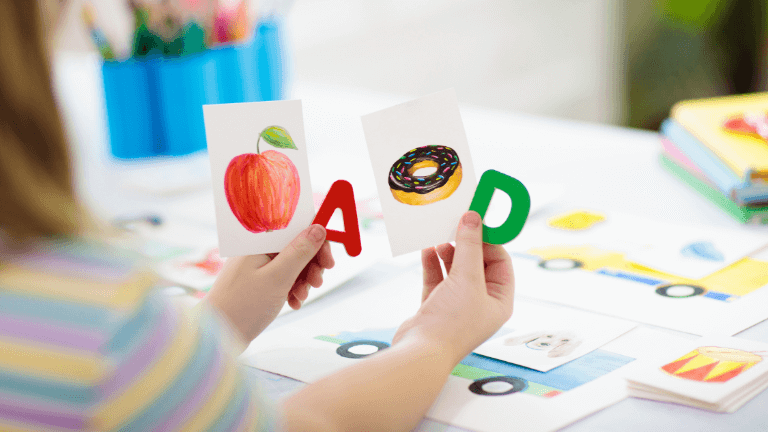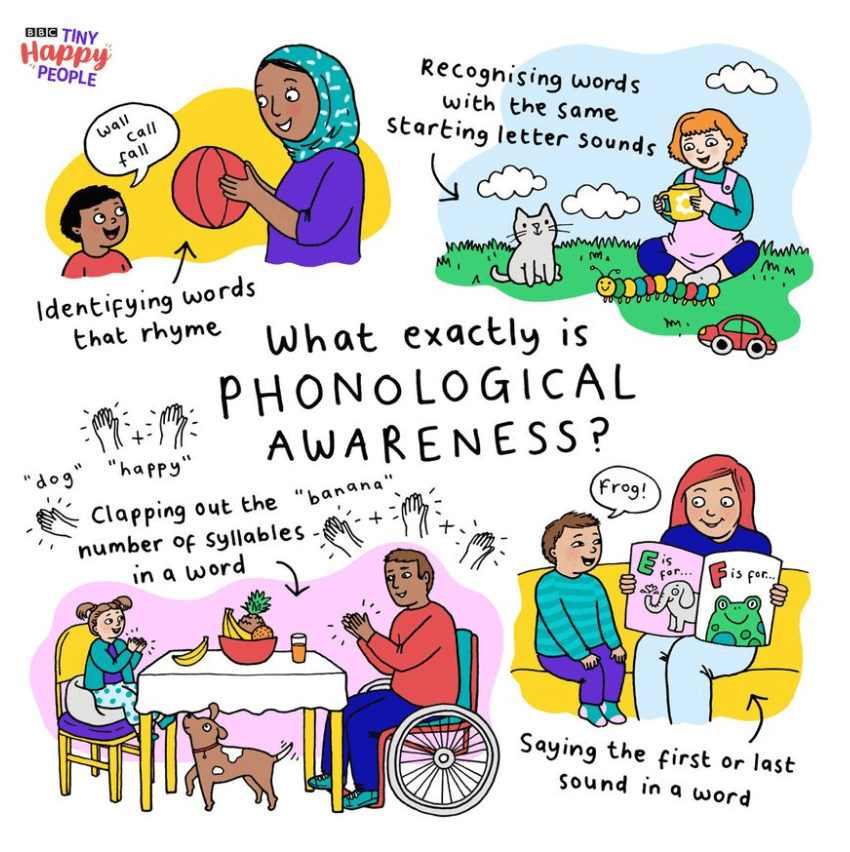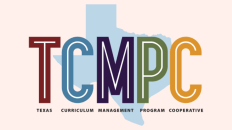While my teacher preparation program introduced me to the concepts of phonological awareness, phonemic awareness, and phonics, it wasn’t until I ventured into my role as an instructional coach that I actively applied this knowledge. The profound relationship between phonological awareness and phonics skills and their impact on students’ literacy and reading development eluded me until the early stages of my career.
First, let’s ensure we have a clear understanding of the terms we are using. Navigating the intricate landscape of literacy can be complex like understanding the differences between phonological awareness and phonics. There is a difference between phonological awareness and phonics. There is a connection between the science of reading and how we approach the skills. Our brain works in magical ways and simply put, there is a blended approach to reading.
Phonological Awareness
Phonological awareness is the foundational skill for reading with a few key attributes…
- Connected to the realm of sounds
- Ability to identify and distinguish between sounds in a word
- Explains how sounds work in different ways in a word
- Taught without letters either blocks or boxes that symbolize the sounds
It is important for students to identify and learn those sounds clearly before moving to their corresponding letters. Sometimes, we hear that phonological awareness can be taught in the dark – a metaphor that there should be no letters.
Phonemic Awareness
Phonological awareness is an umbrella concept that contains phonics and phonemic awareness. In contrast, phonemic awareness is the ability to understand the “phonemes” – the smallest unit of sound that words make. Phonemic awareness refers to the ability to identify and manipulate individual sounds in spoken words. Phonics focuses on the relationship between letters and sounds in written language. There is emphasis on the importance of developing both skills for effective literacy and instruction.
While phonemic awareness is crucial for early reading development, phonics play a significant role in helping students understand the alphabetic principle and decode the words. There is a complementary nature of phonemic awareness, and phonic skills, both promoting proficient reading and writing abilities among learners.
Phonics
It’s important to emphasize that phonics and phonological awareness are not the same. Phonics refers to the relationship between letters (graphemes) and sounds (phonemes) in written language. Teaching students to decode words by associating sounds with letters.
Phonological awareness, on the other hand, involves recognizing and manipulating the individual sounds in spoken language. Examples of phonological awareness are rhyming and segmenting words into syllables and phonemes. Understanding this difference is critical in achieving effective literacy instruction. Both phonics and phonological awareness are critical skills in developing strong reading and writing abilities in students.
Conclusion
The ESC Region 13 RLA specialists empower teachers through quality, professional development that is reflective of campus, district, and regional needs.
We create powerful learning experiences for teachers that are active, learner-centered, and responsive to student needs. Connect with our RLA specialists to learn more about the resources and customized professional development opportunities at the campus and district level.
Subscribe to the RLA newsletter for the latest news and updates. For current workshops and conferences, visit the RLA website or the Region 13 eCampus catalog.

Kristeena Reiser
Kristeena is an Elementary Reading Language Arts Specialist at ESC Region 13.






Add comment